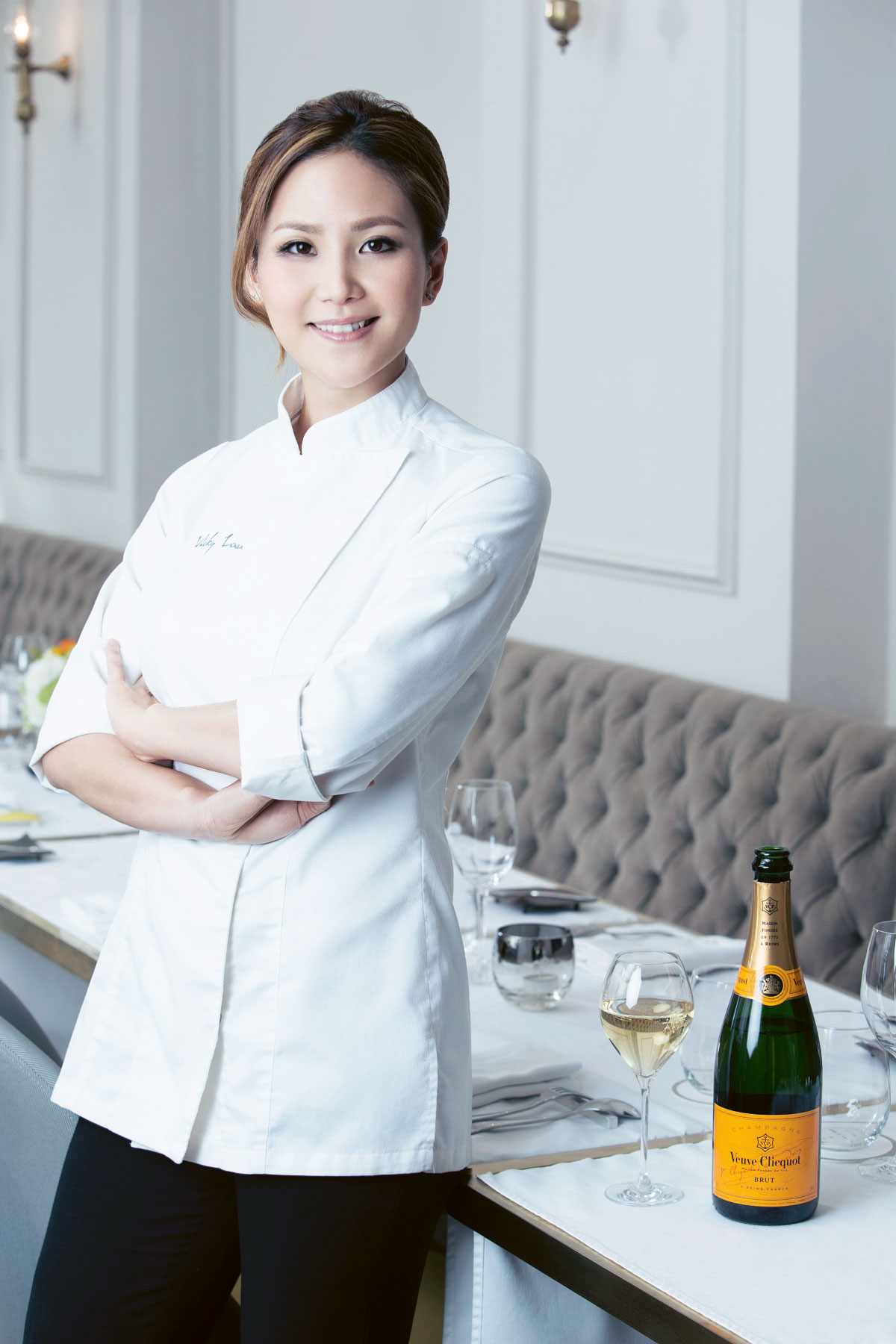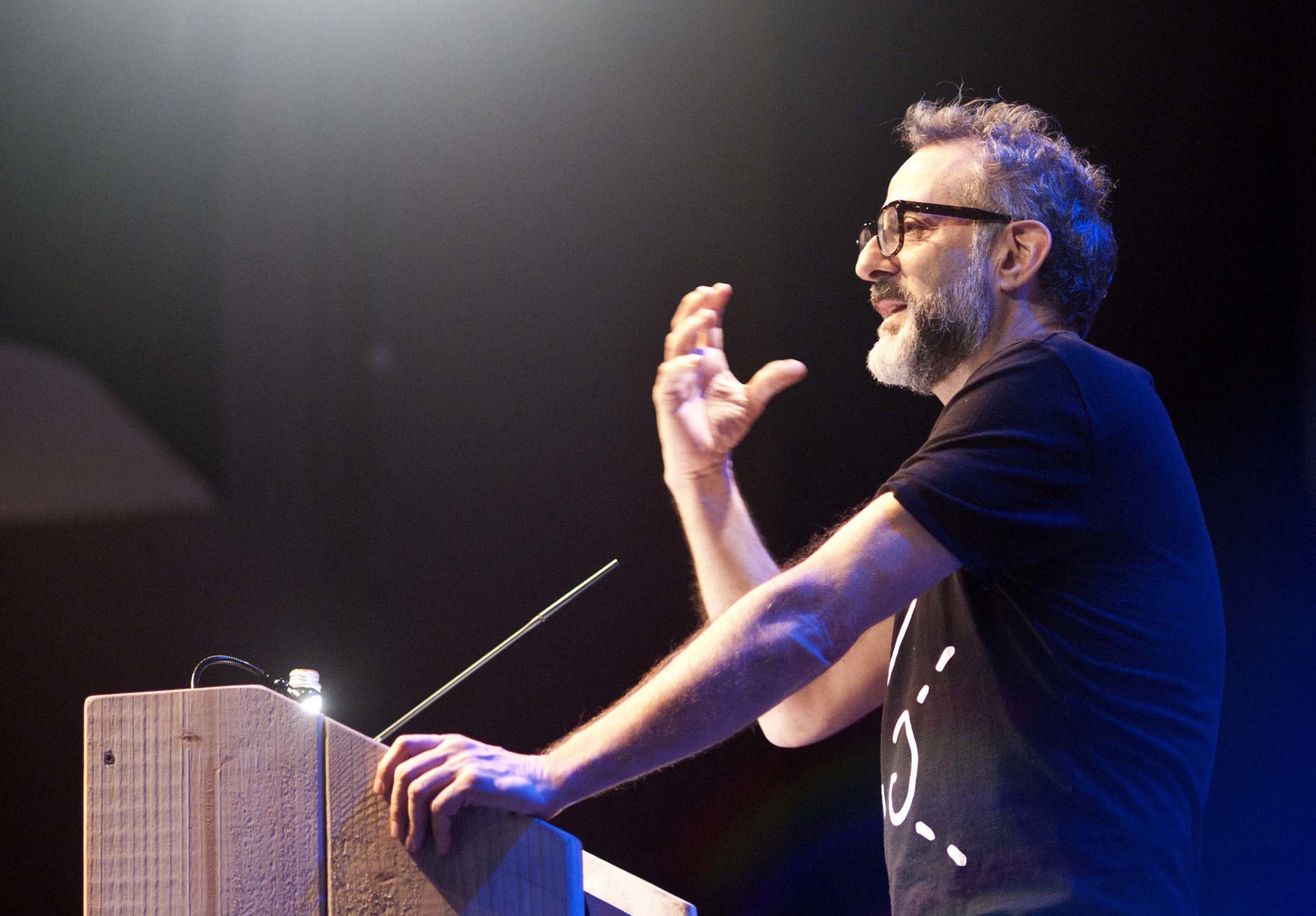Since the emergence of modern restaurants over 100 years ago, the role of the chef has not changed. Traditionally regarded as cooks and creators, for the most part they toiled behind the scenes, entirely comfortable in their anonymity. Today, however, successful chefs are entrepreneurs, social activists, and budding scientists.
Like engineers, doctors, and teachers, chefs can make a positive impact on society. After all, the ability to feed people and identify healthy food sources remains a global issue. Increasingly, chefs are combining their collective talents to challenge the ways we eat and cook. Beyond mastering technical skills, the chefs of tomorrow need to understand farming methods and design trends, and to be prepared to mentor outside the kitchen and adapt to changing technologies.
The MAD Symposium and global cooking events such as The Gelinaz Shuffle are creating communities of like-minded culinary thinkers, or philochefers, who share ideas on the ever-evolving role of the chef. These movements are creating a new generation of chefs who, although coming from diverse backgrounds, share a mission to change the way we cook and eat.
The artist
Pierre Hermé, the great French pastry chef, is heralded as “the Picasso of Pastry.” The New York Times compares Ferran Adrià to Salvador Dalí. Vicky Lau, Asia’s Best Female Chef 2015, was a graphic designer before entering the kitchen. Frédéric Peneau, chef-restaurateur behind Hong Kong’s Serge et le phoque, is a former architect
Future chefs are no longer simply cooks working in restaurants; they are artisans, designers or visual artists operating in ‘studios,’ ‘labs,’ and ‘ateliers.’
Ukraine’s Dinara Kasko, a former architectural designer-turned-pastry chef, uses design software and 3D printing to mold pastry structures that replace manual cooking techniques. Coolhaus, the Los Angeles-based ‘architecturally inspired’ brand of gourmet desserts, was co-founded by Freya Estreller and Natasha Case, a former real estate developer and designer, respectively. After losing their jobs in the economic downturn, they bought a food truck and introduced their brand of “Farchitecture,” a combination of food and architecture. In an effort to make architecture accessible and fun, they launched a range of ice creams and desserts named after designers, like “Renzo Apple Pie-ano.”
Future chefs are no longer simply cooks working in restaurants; they are artisans, designers or visual artists operating in ‘studios,’ ‘labs,’ and ‘ateliers.’
Today, food is being celebrated—and elevated—as an art form. The opening of New York’s Museum of Food and Drink showcases the history, science, and culture of food. Likewise, museums are turning their focus to F&B programs. In Situ by Corey Lee, at the San Francisco Museum of Modern Art, visitors are guided through a gallery of curated dishes from the world’s most celebrated chefs.
In the future, we will see more crossovers in the worlds of art, food, and design. Chefs will continue to push the boundaries of culinary innovation, inviting guests to dine in the dark, in stripped-back spaces or in avant-garde settings designed to stir the senses.

The activist
Name any hard-hitting issue today—poverty, sustainability, genetic modification, childhood nutrition, refugees—and you’re likely to find a chef doing their bit to solve it. Chefs today are using their celebrity to create change with socio-economic and environmental issues.
Massimo Bottura, known for his contemporary Italian cuisine and securing the No.1 spot on the World’s 50 Best Restaurants 2016 list, is taking haute cuisine to the streets, feeding the homeless with his Refettorio initiative. During the World Expo 2015 in Milan and this year’s Summer Olympics in Rio de Janeiro, he and his band of volunteer chefs made comforting, nutritious meals for the homeless from food waste that would have otherwise been thrown away.
One of the forerunners in food activism is British chef Jamie Oliver who has taken his fight against childhood obesity from school cafeterias to the halls of government, recently lobbying for a sugar tax in the United Kingdom, while in the United States, former Noma head chef Daniel Giusti launched Brigaid, with the goal of putting chefs in schools to change the way students eat. Schools are also funding programs to start community farms and gardens where children can take a hands-on approach to understanding where food comes from.
Food and policy has never been so closely linked, with chefs acting as counsel to politicians. Chef Dan Barber of Blue Hill was appointed by President Barack Obama to serve in the President’s Council on Physical Fitness, Sports and Nutrition, and is one of many chefs leveraging their culinary clout to lobby for change.
Traditionally regarded as cooks and creators, for the most part they toiled behind the scenes, entirely comfortable in their anonymity. Today, however, successful chefs are entrepreneurs, social activists, and budding scientists.
Chefs are also coming to the rescue of refugees. Initiatives like The Conflict Kitchen, Migratory Chefs (Les Cuistots Migrateurs), and the Refugee Food Festival had renowned chefs partnering with refugee chefs for an exchange of gastronomy and culture. Soup for Syria, a cookbook and humanitarian campaign designed to raise awareness for the Syrian refugees, was created by Lebanese food writer and photographer Barbara Abdeni Massaad.
Food waste and sustainability remain some of the most pressing issues facing chefs and restaurants today. Crafting strategies to address these issues is no longer an option but a business imperative. Bo.lan in Bangkok, known for its contemporary Thai cuisine, is striving to become the city’s first zero-waste restaurant by implementing its own organic waste recycling system and growing its own food.
Beyond the kitchen, chefs are embracing their new roles as agents of change. Connecticut chef Michel Nischan, founder of non-profit Wholesome Wave, is working to make farm-fresh produce available in low-income communities. Similarly, non-chefs are making the connection between low-income families and access to nutritious food. American fashion designer Ron Finley, self-proclaimed “Guerrilla Gardener,” grows fruits and vegetables in South Los Angeles. “Growing your own food is like printing your own money!” says Finley. If food is as powerful as currency, we will be seeing more chefs standing up to shape policy and running purpose-driven enterprises.
The educator
With an increased awareness of—and concern for—health, hunger, and waste issues, chefs are using their expertise in schools and non-profit organizations.
Long before Michelle Obama converted the White House garden into a vegetable patch, chef and restaurateur Alice Waters, the venerated high priestess of the farm-to-table movement and founder of Chez Panisse, was turning school playgrounds into “Edible Schoolyards.” Her pioneering program engages children by teaching them to grow and harvest their own fruits and vegetables.
More recently, chef Jean-Georges Vongerichten started Food Dreams, a foundation that grants scholarships to graduates to pursue a career in the culinary arts and Michael Laiskonis, former executive pastry chef of New York’s Le Bernardin, was appointed creative director of the Institute of Culinary Education.
While culinary schools have been a thriving business, especially in the last decade, food brands also see the value in education. High-end chocolate brand Valrhona for example, has expanded its professional school to Brooklyn, offering pastry and confection classes with world-renowned chefs.
Although the restaurant industry remains competitive and stressful, communities of chefs are banding together to share information and serve as mentors. With the challenges and costs involved in opening a restaurant, the future will see more chefs sharing their skills in a classroom rather than a kitchen.
The scientist
While chefs support artistic and philanthropic approaches to cooking, science and burgeoning technologies are changing how we eat. Nathan Myhrvold, Microsoft’s chief technology officer, is famous for his “Modernist Cuisine” cookbook, which applies scientific principles to cooking. J. Kenji Lopez-Alt, the American chef and author of “The Food Lab,” is a graduate of Michigan Institute of Technology and explains complicated recipes through scientific principles.
While a number of high-profile chefs such as Heston Blumenthal and Grant Achatz are known as much for their chemistry know-how as their culinary skills, we see this phenomenon filtering through to the general population. The phrase ‘molecular gastronomy’ once seemed exotic, but with sous-vide machines now as common as a blender, the concept has gone mainstream.
Technology is also dictating the way we eat with a boom in meal-planning apps. With this trend, chefs assume the role of an engineer, working with start-ups to determine what, when, and how people will eat. These apps depend on a chef’s knowledge of chemistry to understand how meals can stay fresh and require their input on the packaging, recipes, and ingredients.
As diners develop more sophisticated tastes, there is increased demand for information. And technology is answering this demand. Apps like Chef Steps provide an online community of budding chefs who share fact-based tips and no-fail recipes.

Technology is also dictating the way we eat with a boom in meal-planning apps. With this trend, chefs assume the role of an engineer, working with startups to determine what, when, and how people will eat. These apps depend on a chef’s knowledge of chemistry to understand how meals can stay fresh and require their input on the packaging, recipes, and ingredients.
In developed nations, fewer people are cooking than ever before. In American households in 2014, for example, less than 60 percent of dinners served at home were actually cooked at home. The figure was closer to 75 percent 30 years earlier. Despite these findings, the irony is that interest in cooking has never been higher.
Millennials are spending more on ready-made foods, feeding the creation of meal delivery companies and pre-packaged foods. According to a recent US report, in-store dining and takeout of prepared meals from grocery stores grew nearly 30 percent since 2008, accounting for $10 billion of consumer spending in 2015.
This story is a part of CatchOn’s annual Future of Food report. For a copy of the complete report, email them at [email protected].
CatchOn is a brand communications and PR consultancy in hospitality, travel, and lifestyle.
Originally published in F&B Report Vol. 13 No. 6





